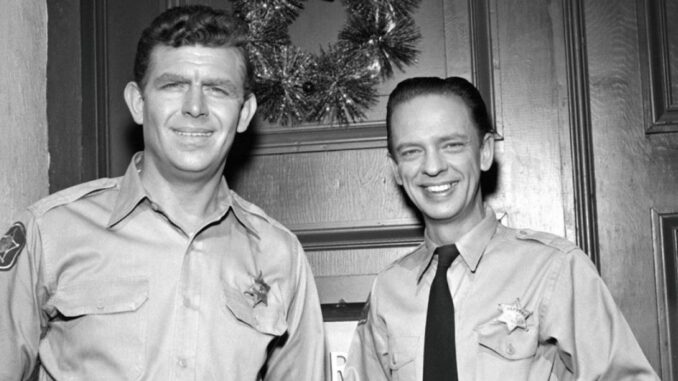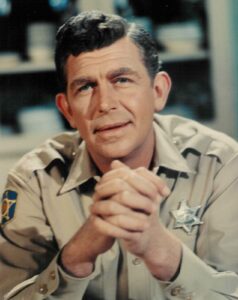
Introduction: What’s in a Name, Anyway?
Ever sat down to watch The Andy Griffith Show and thought, “Why didn’t they just call him Andy Griffith?” After all, the show carried his real name in the title. So why go with Andy Taylor instead? Was it just for fun, or was there something more strategic going on?
Let’s break it all down. From branding decisions to clever showbiz tricks, the reason Andy Griffith wasn’t Andy Griffith on screen might just surprise you. And yes—he explained it himself.
The Name That Sparked Curiosity
Why Fans Confused the Name for Years
If you were a casual viewer, the difference between “Andy Griffith” and “Andy Taylor” might have flown under the radar. But longtime fans eventually started asking: Why not just use his real name for the character too?
The confusion is understandable. The show’s title uses his real name, while the character has a different last name. That’s not something you see every day.
The Strategic Decision Behind the Name
Andy Griffith’s Own Explanation
Andy Griffith once said that the decision to name his character Andy Taylor was a conscious and strategic one. He wanted to create a fictional character, not a representation of himself. It wasn’t about vanity—it was about clarity.
“We called him Andy Taylor because I didn’t want people thinking he was me,” Griffith once explained. “It was important to keep that separation.”
Separating the Actor from the Character
Why Andy Griffith Wanted a Distinct Persona
Andy understood the power of storytelling. He knew that if audiences associated the character too closely with him as a person, it could hurt the show’s believability.
In short: Andy Griffith the man and Andy Taylor the sheriff were two different people. One lived in Mayberry. The other? He was just playing a role—albeit one that seemed tailor-made for him.
The Power of Fictional Identity in TV
Why Characters Need Their Own Names
Television thrives on fictional worlds. While it’s tempting to blur the lines between real and pretend, doing so too much can confuse audiences. Giving a character a different name allows viewers to fully immerse themselves in the story without overanalyzing the actor behind the role.
And Andy Griffith? He got that instinctively.
Why Mayberry Needed Andy Taylor, Not Andy Griffith
The Small-Town Symbolism
Mayberry was more than just a backdrop. It was a slice of Americana, an idealized version of small-town life. Andy Taylor was the heart of that world. By naming him “Taylor” instead of “Griffith,” it created distance between the fame of the real Andy and the everyday humility of the sheriff.
That distinction made Mayberry feel more real—even if it wasn’t.

The Marketing Angle: A Smart Move in Showbiz
Why the Show Used Andy’s Name in the Title
The show was still The Andy Griffith Show—and that wasn’t a mistake. Producers wanted to leverage Andy’s rising fame from his stand-up and film work to draw in audiences. Naming the show after him was a surefire way to do that.
But giving the character a different last name? That kept the story grounded. It was the best of both worlds: big-name recognition with a small-town feel.
The Influence of Classic TV Norms
How Other Shows Did It Differently (Or the Same)
Not every show took this route. Think of The Dick Van Dyke Show, where Dick Van Dyke played Rob Petrie—not himself. Similarly, The Mary Tyler Moore Show didn’t name her character Mary Moore.
So in many ways, Andy Griffith followed a common pattern. It wasn’t unusual to name the show after the star while giving the character a new identity. It helped actors flex their creative range without boxing them in.
The Sheriff Who Was Always Just a Bit Familiar
Did Andy Taylor Reflect Andy Griffith Anyway?
Despite their different last names, there’s no denying that Andy Taylor and Andy Griffith shared a lot of traits: wisdom, patience, warmth, and that easygoing Southern charm. The line may have been drawn on paper—but the spirit of Andy Griffith lived in Andy Taylor.
And maybe that was the point: separate the names, but keep the soul.
Audience Perception and Real-World Impact
Why Viewers Still Blurred the Lines
Even with the name change, many fans still saw the character as “Andy Griffith.” And that’s fine. When a performance is that genuine, it’s hard not to.
But the separation mattered more behind the scenes—helping Griffith shape the tone and direction of the show without turning it into a vanity project.
The Legacy of Andy Taylor
Why the Character Stands the Test of Time
Andy Taylor became one of the most beloved TV characters of all time. That’s not an exaggeration. His gentle wisdom, firm sense of justice, and loving parenting made him a cultural icon.
He wasn’t a flashy hero. He was a human one. And that made all the difference.
Behind the Scenes: Creative Control and Clarity
Griffith’s Role as a Producer
As executive producer, Andy Griffith had a hand in nearly every creative decision—including names. He knew that keeping “Andy Griffith” off-screen allowed him more freedom to write, develop, and direct stories that felt true to the fictional world he was building.
Why the Naming Decision Still Matters Today
Modern Shows That Follow the Same Playbook
This practice didn’t end with classic TV. Even today, many actors choose to play characters with names different from their own—especially if they’re the face of the show.
From Seinfeld to Curb Your Enthusiasm, the choice to keep or change the name can impact how audiences relate to the story. Andy Griffith may have helped set that precedent.
The Balance Between Fame and Fiction
Avoiding the Pitfall of Self-Insertion
By keeping his character’s name separate from his own, Andy Griffith avoided the common trap of making the show “all about him.” Instead, The Andy Griffith Show became about Mayberry, its people, and its timeless values.
Andy Taylor was the glue. Not the spotlight.
Final Thoughts: A Smart Choice That Made TV History
Why It All Worked So Well
In the end, the decision to name the character Andy Taylor was subtle but brilliant. It gave Andy Griffith the best of both worlds: name recognition and narrative authenticity. And it allowed audiences to fall in love with a character who felt like family—even if he wasn’t quite the man on the marquee.
Conclusion: The Name That Shaped a Legacy
Andy Griffith knew exactly what he was doing. By playing Andy Taylor instead of himself, he created a character that became bigger than one man. He became the symbol of integrity, warmth, and simplicity—values that still resonate decades later.
So the next time you watch The Andy Griffith Show, remember: names matter. And this one? It helped create TV magic.
FAQs
1. Did Andy Griffith ever consider using his real name on the show?
No, Andy intentionally chose to give his character a different last name to separate himself from the fictional role and maintain creative clarity.
2. Was Andy Taylor based on Andy Griffith’s real personality?
In many ways, yes. Though not autobiographical, the character of Andy Taylor shared Griffith’s calm demeanor and moral center.
3. Why didn’t other characters call him by his full name?
To maintain the illusion of small-town life, everyone called him simply “Andy.” The last name wasn’t used much in dialogue, which made the transition easier for viewers.
4. Did fans ever confuse Andy Taylor with Andy Griffith?
Yes, many fans thought they were the same person, which is part of why the name difference mattered so much behind the scenes.
5. What other shows followed the same naming strategy?
Shows like The Mary Tyler Moore Show, The Dick Van Dyke Show, and even Seinfeld all used variations of this technique—either keeping the first name or creating a completely fictional identity.
